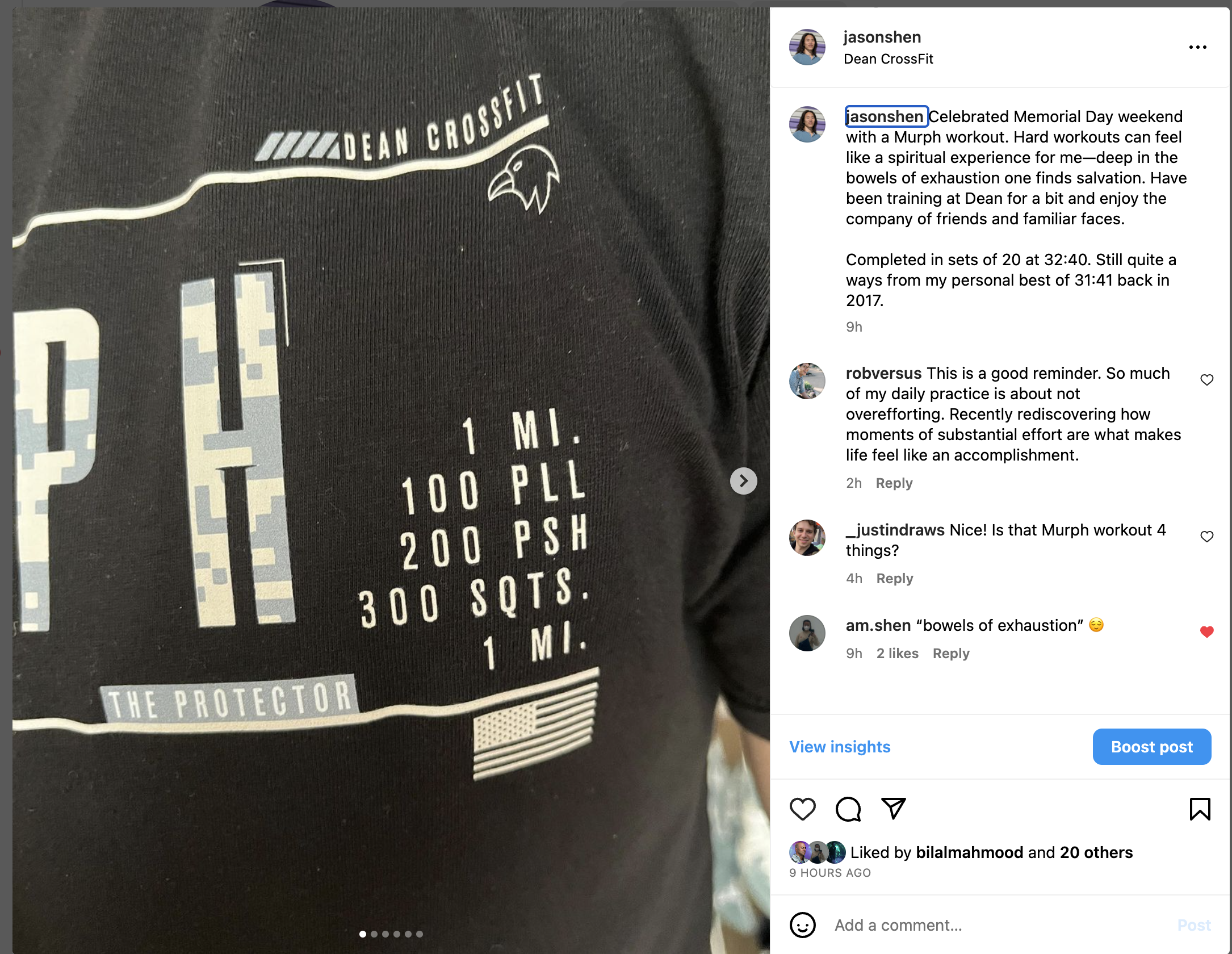I turned 37 this past Monday, officially entering my late thirties. Traditionally, I've done an annual roundup of lessons learned over the past 12 months. But what I've found with age is that new lessons are harder to come by.
This year, I've decided to document 30 lessons learned in the nearly 3 years I've spent at Meta—concepts, tactics, and ideas I only came to understand through my experience at the Mark Z production.
These lessons will unfold over the next 3 weeks. Part 1 focuses on
—Jason

What's on deck this week:
- ⚡️The remarkable comeback of Dippin' Dots
- ⚙️ Metrics & Impact (Meta Leswons Learned 1/3)
- 🏋🏼 Memorial Day Murph
⚡️ The Comeback of Dippin' Dots
As a millennial, I associate Dippin' Dots with a fun if pricey frozen treat I would beg my parents to get when visiting an amusement park like Six Flags.
Turns out, it was created by a brilliant scientist turned entrepreneur who lost ownership after the Great Recession decimated sales. In a twist, the new owners sold it to J&J Snack Foods, a $2B+ food conglomerate which has its own history of being bought out of bankruptcy.
There's a fascinating story of how the new owners turned the business around, expanded into the fake meat industry, and also, as I learned in researching this case, revenge porn.
My takeaway here: the creative and technical genius does not always get their fair due of a venture's success, but also the art of creating buisness value is a creative act too. Also privileged white boy nepo babies are going to nepo.

Read the whole thread here.
⚙️ Metrics & Impact (Meta Lessons Learned 1/3)
Driving Impact
Impact is the currency of Meta—everyone is responsible for presenting the impact they've driven on their products, projects, and programs. Impact represents concrete, actualized contributions you've made to the business, and every function, from engineer to privacy specialist, recruiter to data scientist, is responsible for delivering it.
- Goal in Words—impact is communicated with numbers but it must first be expressed in plain English. Every product, project, and program must communicate "what good looks like" using prose before measuring it with data. Ex: "People come to our site to find trustworthy, up-to-date knowledge about their financial health and "
- Headroom—if impact represents the historical contributions you and/or your product have made, headroom represents how much there's left to go before diminishing returns kick in. If there's not much headroom left, investment and resources are diverted to other areas—this is how once promising projects stall and slowly die in favor of the next big thing.
- Incrementality—Meta enjoys a massive audience of users and product teams are hungry to tap into it for their product. But they must prove not only that users love their product (what you might call "product market fit") but that engaging with your product leads to incremental impact. E.g. it's not just that people want to create charity fundraisers on the platform, but that the act of creating charity fundraisers leads to moving the Northstar Metric.
- Impact of Strategy—PM's are evaluated on both execution (delivering impact via product improvements) and strategy (identifying opportunities for additional impact). Demonstrating the impact strategy is often a tricky, but two ways to do so are 1) showing you've aligned senior leaders around a plan or proposal you have and 2) teams outside your immediate org changing their plans or reallocating resources based on your strategy.
- Deferred Impact—recognition for results you and your project delivered farther after the original evaluation period. Ex: your internal tool for generating dashboards starts getting popular a year after you built it, earning you Deferred Impact on your next performance review.
Metrics Mania
Meta is incredible good at getting its product teams to drive up metric goals, which has made it the dominant purveyor of social networks for the last 2 decades.
- Northstar Metric—also known as a Topline Metric, this is the big baddie, the metric that all features, projects, and subteams are meant to ladder up to and should quantitatively represents whether we're driving the Goal In Words. Ex: daily active users, meaningful user sessions, or a weighted metric.
- Goal Map—this is a structured breakdown of how each feature or project team contributes to the Northstar Metric. Ex: the buyer-facing side of a marketplace product might have "total buyers" as their Northstar, with new buyers, returning buyers, and resurrected buyers as elements of their Goal Map.
- Leading vs Lagging (Metrics)—the timeframe of a metric matters. Leading Metrics give us a hint of the future while Lagging Metrics show up much later. Ex: a dip in sales meetings booked in Q1 will likely lead to lower deals closed in Q2 (leading) while consumer sentiment of your brand is important but takes a long time to update (lagging).
- Guardrail Metric—to prevent teams from overly gaming their product to drive their Northstar Metrics in a careless or destructive way, guardrail or health metrics must also be hit. Ex: a chat app with a Northstar Metric of daily active conversations might set a guardrail metric of no more than 0.XX% of messages being reported by users as spam or harmful.
- Weighted Metric—complex products that have multiple relevant actions might choose to track or goal against a metric that rolls up individual metrics into a formulated single score. Ex: an engagement score that aggregates favorites, bookmarks, shares, replies, and messages into a single weighted number.
Do these explanations make sense? Please help me make them as clear as possible. Next week, part 2 of 3: People and Planning.
🏋🏼 Memorial Day Murph
For those readers who are in the United States, I hope you're enjoying the three day weekend. In recognition for our armed forces, I completed the Murph hero workout:
- 1 mile run
- 100 pull-ups
- 200 push-ups
- 300 squats
- 1 mile run

I broke it up into sets of 20 which let me stay moving and I finished at 39:37—better than I expected but much lower than my personal best. (Instagram post)
Part of getting older means facing that you may never reach your past PB's. What's great about Crossfit's wide variety of workouts, and pursuing new endeavors in general, is that you have chances to try new things, which you can then improve and set new PB's in.
The Murph workout is named after Navy SEAL Michael Murphy, who died in the line of fire in Afghanistan in 2005 along with 5 other soldiers. The workout was popularized by the Air Force paramedic who retrieved his body (more here).
Recent Issues




